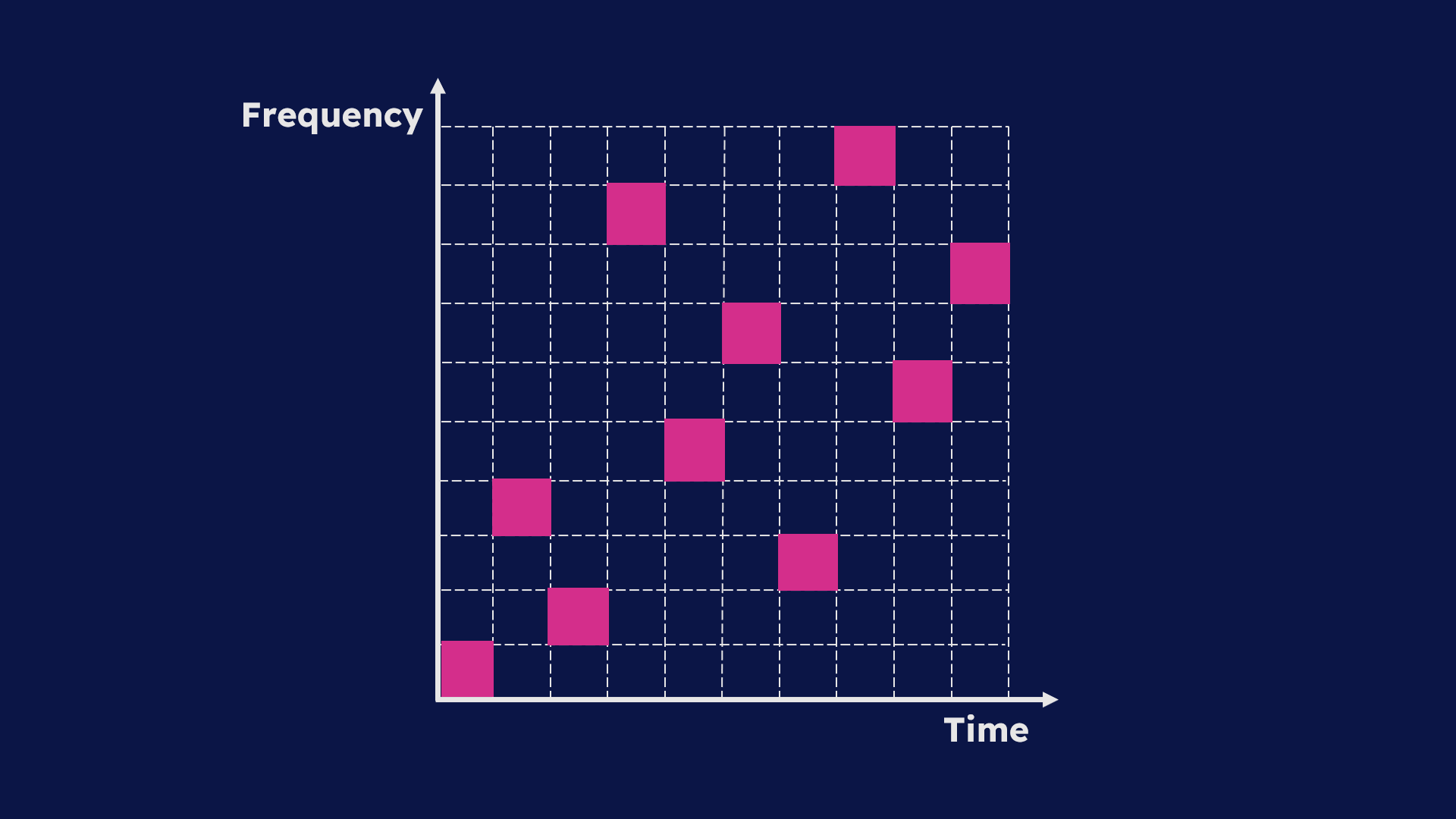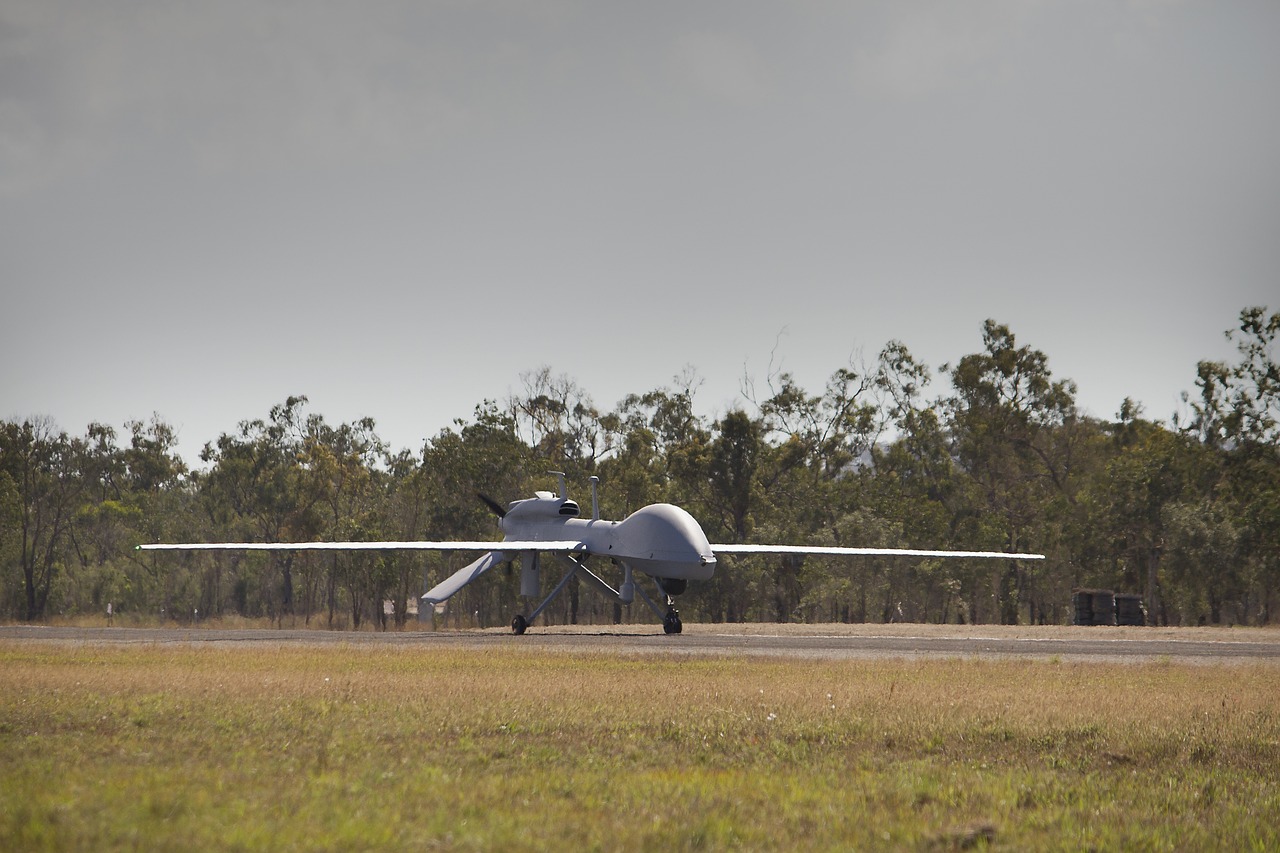Optimizing UAV Communications with Frequency Hopping
Signal interference poses a significant challenge in unmanned aerial vehicle (UAV) communications. Frequency hopping technology has emerged as an optimal solution to address this issue.
What is Frequency Hopping?
Frequency hopping is a wireless communication technology that rapidly switches communication signals between different frequencies to mitigate signal interference. In Frequency hopping, communication signals hop between frequencies on the frequency axis, with each data packet or interval transmitted at different frequencies. This frequency-hopping pattern is determined by a pre-agreed pseudorandom sequence.

Frequency Hopping
The Benefits of Frequency Hopping
Frequency hopping technology offers several advantages, including resistance to interference, security and covert operations, and spectrum efficiency.
- Resistance to interference: Due to the rapid frequency hopping of communication signals, it can effectively resist malicious interference and eavesdropping.
- Security and covert operations: Because the frequency hopping pattern is based on a pseudorandom sequence, communication signals are difficult for unauthorized recipients to capture and comprehend, thereby enhancing communication security and covert operations.
- Improves spectrum efficiency: A frequency hopping transmitted radio signal can share frequency bands with conventional transmissions without causing significant interference, thus enhancing spectrum efficiency.
Application of Frequency Hopping
Frequency hopping is currently employed in Bluetooth, unmanned aerial vehicles (UAVs), and other military applications. Due to its resistance to interference, security, and covert operation, this technology is particularly suitable for UAV communications.

Unmanned Aerial Vehicle (UAV)
Frequency-Hopping in Unmanned Aerial Vehicles (UAVs)
Taking YTTEK’s software-defined radio payload Y.LOAD G as an example; it is a software-defined payload specifically designed for UAV communication, leveraging the advantages of frequency hopping to the fullest. For example, when UAVs gather intelligence in enemy territory, frequency hopping’s covert capabilities make it challenging for adversaries to detect. Additionally, its interference resistance ensures stable transmission of control commands even in the presence of enemy jamming signals. Finally, robust security measures enable the safe transmission of collected data back to the ground.
Information About Y.LOAD G
- Operates in 1.6GHz~2.6GHz (S-band)
- The frequency hopping rate is 1000 hops per second
- Compact size for CubeSat (11cmx10cmx3cm)
- Designed with Xilinx Zynq UltraScale+ XCZU9EG reprogrammable FPGA
- Includes ARM CPU core: Cortex A53, Cortex R5, and Mali-400 MP2
Frequency-Hopping in Civil Application
Frequency hopping is also used in everyday life, such as in Bluetooth technology. Through frequency hopping, Bluetooth devices can switch between different channels to reduce interference and seek better signal quality, thereby enhancing communication stability and reliability.
From UAV applications to daily life, frequency hopping offers a robust connection for various domains, even in an environment filled with interference. On the other hand, YTTEK leverages years of experience in wireless. We offer not only software-defined radio payloads for UAVs but also payloads for satellites, such as Y.LOAD S. Welcome to visit our product page to explore more technologies.

